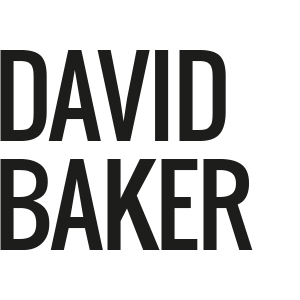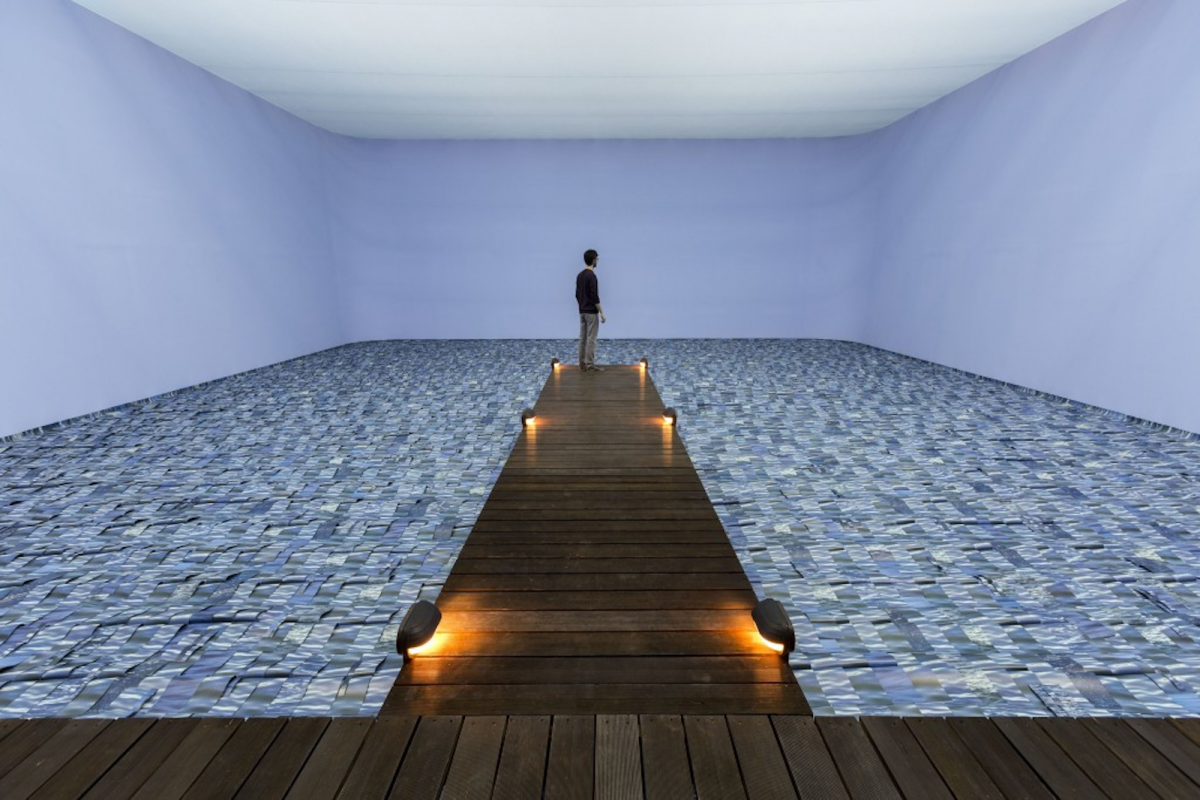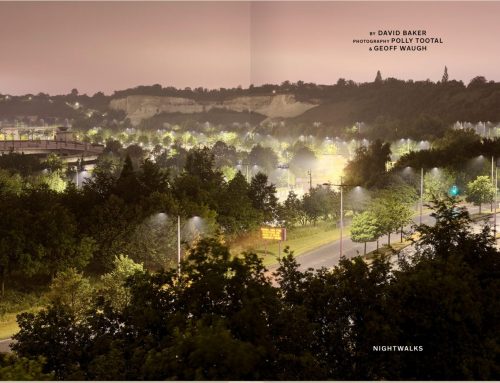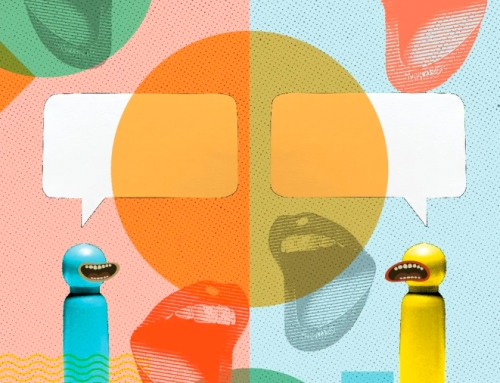The acclaimed Brazilian artist is still defying convention
Financial Times, 28 March 2014
On a huge chest in the centre of Cildo Meireles’ studio in Rio de Janeiro are three self-inking rubber stamps, each with a single line of text:
WHAT HAPPENED TO AMARILDO?
WHY WAS TONINHO DO PT ASSASSINATED?
WHY WAS CELSO DANIEL ASSASSINATED?
Halfway through our conversation, Mereiles gets up from his chair, takes three R$2 notes out of his wallet, stamps each with a slogan and gives them to me. He has turned money into art.
The annotated notes are a continuation of “Inserções em Circuitos Ideológicos” (“Insertions into Ideological Circuits”), an artwork Meireles started in 1970. As a response to the extreme censorship that Brazil was enduring under the military dictatorship, he would print slogans on banknotes and Coca-Cola bottles – “Yankees go home”, “Fair elections” and, later, “Who killed Herzog?”, referring to journalist Vladimir Herzog, who was tortured to death by the military police – and then put them back into circulation.
“The idea,” he says, “was to choose things that were too valuable to throw away. No one wants to throw away money and Coca-Cola bottles had a return deposit on them. So then these ideas and slogans would circulate widely, avoiding the control of the censor.”
Today, he believes, there are still many questions the government has to answer. A bricklayer, Amarildo de Souza, was arrested by police in Rio’s Rocinha favela in July last year and he has not been seen since. Toninho and Celso Daniel were two small-town mayors, believed to be investigating corruption in public-spending projects, who were shot dead in 2001 and 2002 and whose deaths have never been satisfactorily explained. And, on the day we meet, in late February, Rio is still dealing with the aftermath of an anti-government protest that left a film cameraman dead, many injured and property destroyed. For some, the protests that have swept the country in the past 12 months are the country’s most significant since 1968, when the police killing of a Brazilian teenager set off riots.
“These protests are very similar to my protests,” Mereiles agrees. “I don’t want to talk about the violence but, in principle, protests are born out of causes that are absolutely just. It’s clear that social questions [in Brazil] have not been resolved and then there is still so much corruption and waste.” Will he be making more stamps to support the protests? “Well, the thing about the ‘Inserções’ is that anyone can do them,” he says. “You could go now and buy a stamp and start stamping the money in your wallet. I have never sold the art I did for the ‘Inserções’. It is for everyone to experience and be part of. Art should ask questions. We can all ask questions. Then we can begin to identify the real villains of the story.”
Meireles is one of Brazil’s most influential living artists, with a career spanning more than 50 years. His work is well known both in his home country and overseas – he has had major retrospectives at Tate Modern (in 2008) and, last year, in Spain and Portugal.
Hans Ulrich Obrist, co-director of the Serpentine Gallery in London, describes him as “one of the greatest artists of our time”. He highlights his attempt to change the relationship between art and viewer. Meireles, he says, rejected “the passive nature of most art in exhibitions in favour of participatory art where the viewer does at least half of the work. Meireles is a serial inventor and his work has many dimensions: he makes visionary drawings, DIY instruction pieces, conceptual work . . . labyrinthine and immersive installations as well as environments which are often tactile and appeal to all senses. And there is always a political dimension to Meireles’ work.”
Meireles also likes experimenting with scale. Some works are huge. In “Olvido” (“Oblivion”), a teepee, made up of 6,000 banknotes, sits on three tons of bones in a ring of 69,300 candles. “Amerikka” features 20,050 wooden eggs under a ceiling of 76,150 bullets. “Marulho” (“Swell”), a representation of the ocean, includes 17,000 books containing photographs of seawater.
Yet one of his best-known works is tiny: “Cruzeiro do Sul” (“Southern Cross”), a wooden cube, 9mm x 9mm x 9mm, made up of two types of wood sacred to Brazil’s Tupi Indians. It is ideally (though seldom) shown placed directly on the floor of an otherwise empty gallery room. The piece he is currently working on, provisionally entitled “Menos é Menos” (“Less Is Less”), is a single dot of graphite, in the centre of a 1m x 70cm piece of white paper, that has to be viewed through a lens.
“I like to play with the idea of big and small,” he says. “It happens specifically in some of my works but I think of these ideas of scale all the time. It is something to do with Brazil, with the huge size of the country. You find it too with artists from the United States, but not so much, say, in France, where things are, how can I put this, sometimes on a more bourgeois scale.” He is trying to develop “Menos é Menos” into what he would like to be “the smallest drawing ever made”.
“I was wondering how I could make a drawing that comprised just a single molecule of graphite [carbon],” he says, “and I was told that it was impossible to isolate a single molecule of graphite. But about a year and half ago, I read about the work of a team led by a man called Peter Schellenberg . . . They had created a net of molecules of graphite which was revolutionary – graphene. And then suddenly we had more possibilities.”
Meireles is a genial host. As we talk, he lounges in an easy chair, shirtless, barefooted and wearing a pair of baggy shorts (Rio’s work uniform), drinking a tiny cup of strong coffee. At 66, he is a good example of the kind of older male native of the city who likes his life, loves his home town and doesn’t feel the need for smart clothes or fancy furniture. He speaks in a soft, slightly rumbly voice, punctuated with a gentle laugh.
Although he came to the world’s attention for the work he did during Brazil’s dictatorship, he says he wasn’t especially political when he began his career. But then, in 1969, he experienced the power of the military government first hand. “I was invited to be part of an exhibition of formalist work at the Museum of Modern Art [in Rio],” he says. “On the day it was due to open, the museum was surrounded by the political police. The head of the operation went into the director and gave him three hours to dismantle the exhibition, otherwise all the participants would be arrested. And from this moment onwards I decided I had to speak about political things in my work.”
Meireles has always avoided what he calls “pamphleteering”. Instead, many of his pieces are ambiguous, allowing the viewer to come to their own conclusions about meaning and intent. “Volátil” (“Volatile”), which he worked on between 1980 and 1994, is a dark, low-ceilinged room, whose floor is covered with ankle-deep grey talc. The air smells of gas and at one end there is a lit candle. Many viewers have associated the work with the gas chambers of the concentration camps. He says the feeling of walking on the talc is like walking on clouds.
“I am interested in this relationship between the work of art and the viewer. Of course art can exist without a viewer but,” he laughs, “it wouldn’t be so useful.”
He has recently been playing with this idea of visible/invisible. In 2012 he produced a piece called “Esfera Invisivel” (“Invisible Sphere”) in which a sheet of aluminium is punched with two concave hemispheres that come together when the piece is closed, forming a sphere that cannot be seen. “It’s a kind of double trick,” he says. “The sphere is invisible because it doesn’t exist and it is invisible because, when the aluminium is closed, you can’t see it. I think there is something very interesting about things that we can imagine but which are hidden.”
Does he like tricks?
“Yes, I do. But art also needs a nucleus. One of the problems with what has happened to conceptual art is that it is very good at seducing people to get their attention but has nothing at the centre. I think art has to be something more than these tricks and magic . . . There needs to be a nucleus, and this is the poetic part, the part on which you construct the piece – like the molecule of carbon or,” he waves his hands around in the air, reaching for the image he needs, “like a black hole that attracts mass and gets smaller and smaller and in the end has no size at all and infinite mass. That’s something that happens in poetry and music, something very powerful, and without it you have nothing.”






